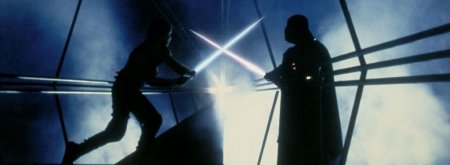A Vogue for Vincent
Vincent Van Gogh is now a solid fixture in our cultural vocabulary. I need only mention sunflowers or a bandaged ear to conjure up his life and legacy. Shunned during his lifetime, by the 20th century he had been declared one of the greatest painters to have lived. The publication of his complete illustrated letters in late 2009 thrust him back into vogue, and recently there have been novels, exhibitions, news stories and even an episode of Doctor Who dedicated to the master painter.
The most substantial tribute was the BBC docudrama entitled Vincent Van Gogh: Painted with Words (April 2010). Taking its inspiration directly from the letters, it merged biography, art history and drama to create a sympathetic portrait of a genius. Vincent, played by Benedict Cumberbatch, appeared to be overwhelmed by mental problems that both invigorated and hindered his artistic vision.
The programme considered Vincent's preoccupations with faith and suffering, subjects that were intertwined in his imagination. He wrote to his brother Theo in 1878: "It always strikes me as very peculiar, that whenever we see the image of indescribable and unutterable desolation ... the thought of God comes into our minds."
"I can very well do without God both in my life and in my painting, but..."
Vincent's father was a minister of the Dutch Reformed Church, and soon Vincent was keen to follow in his footsteps. He began fanatically studying the Bible and, in 1876, he preached his first sermon. It was entitled 'I am a stranger on earth' (taken from Psalm 119:19) and its theme was evidence of his growing disillusionment with middle-class culture.
Vincent felt his isolation from society keenly. Fearing himself unsuitable for inclusion in a civilised community, Vincent found solace in the Scriptures. They seemed to tell him that his supposed vulgarity could be an integral part of his calling. However, he was not to become a simple clergyman. After a stint as a missionary it became clear that he needed another way to communicate, and it was painting that proved to be the vital outlet.
The Power to Create
When painting natural landscapes, Vincent claimed to experience a transcendent spiritual power. In 1882, he wrote: "I cannot understand why everybody does not see it and feel it; nature or God does it for everyone who has eyes and ears and a heart to understand." Here we see the beginning of a slippage between love of the creator and love of the creation. As nature began to operate as replacement religion for Vincent, he retreated from institutionalised Christianity. Taking an interest in eastern art and spirituality he urgently began to connect himself and his work with the natural world.
In September 1888, he finally declared: "I can very well do without God both in my life and in my painting, but I cannot, suffering as I am, do without something which is greater than I am, which is my life, the power to create." Imbuing his own artistic endeavours with divine importance, Vincent seemed to be cutting himself free of Christianity altogether. However, later in the same month he conceded: "That does not prevent me from having terrible need of – shall I say the word? – religion. Then I go out at night and paint the stars."
The results of these nocturnal outbursts were images like The Starry Night, which is perhaps one of Van Gogh's most recognisable paintings: the glowing moon and stars, the gloomy but peaceful stability of the church steeple, the dark foreboding of the trees, the tumbling sky. The interplay between institutionalised religion and a transcendent experience of nature also has its corollary in the painting: the overall effect is balanced and controlled rather than chaotic, but the brush strokes are jagged, wild and forceful, the colours intense and vivid.
Centuries after it was painted, The Starry Night still captivates the crowds. Recently, I was jostling my way through the Museum of Modern Art in New York City and people were swarming in front of it, eagerly snapping photos. The camera flashes illuminated the sea of darkened faces with bursts of light, and the group became, for a moment, a mirror of the work that they were contemplating. But would they look long enough to perceive Van Gogh's longing for something transcendent – and stop to consider what might ultimately fulfil that desire?
© 2011 Rachel Helen Smith
This article appears here by the kind permission of Rachel Helen Smith. It first appeared in the October 2011 edition of Evangelicals Now.



